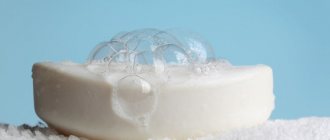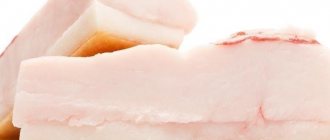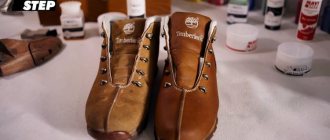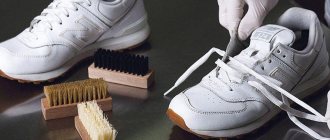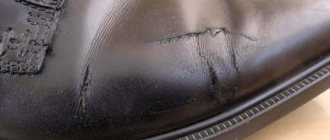This article was prepared by our beloved partners - the #GMfood - an online store of superfoods and craft eco-products.
Just for registering in the store you will receive 300 rubles to your personal bonus account and 2 more interesting gifts (Grab your gifts here)In the store's assortment you will find not only superfoods, but also healthy sweets, breakfasts, herbal teas, peanut butter, master classes for body health and facial beauty, and this is only a small part of the goodies and benefits!
Subscribe to Instagram #GMfood using this link and regularly receive new PP recipes with superfoods, see useful guides to the world of proper nutrition, and also look for gifts hidden under the link in the profile!
Clothes care
Surely, many women are concerned about the issue of caring for their clothes. Each item has its own service life and over time loses its shape, wears out and breaks. In order for a thing to retain its original appearance longer, it needs to be properly cared for.
Clothing is a product that is worn by a person and has aesthetic functions. It protects the human body from the negative influence of the environment. Can be made of fabric, leather, fur, knitted fabric.
Source Wikipedia
Caring for clothes made from different materials has its own nuances.
Silk
Caring for silk clothing requires a delicate approach to things and careful handling. They should only be washed with liquid detergents, which must be mixed well in water. Such things cannot be bleached; the fabric may simply tear. You can soak for no more than 10 minutes.
When doing push-ups, the item should not be twisted. It is best to fold it several times and squeeze it with your palms to let the water drain out. After this, dry in a horizontal position, placing it on a terry towel to absorb moisture, then you can hang it up.
If you need to iron an item, set the iron to the lowest temperature and turn the item inside out. Before putting it in the closet, to avoid wrinkles appearing on it, make sure that the item has cooled down after ironing.
Made from wool
Woolen clothes should be stored folded in bags to prevent dust and dampness.
Before washing, such items should be soaked for 20 minutes in cool water using liquid detergent.
You shouldn't squeeze things out either. After the water has drained, it is best to lay them out on a clean, dry towel. When it gets wet, change the towel. And, of course, you can’t hang woolen items on radiators.
Made from knitwear
Knitwear, like silk, is a capricious fabric. Such things quickly become pelletized and lose their attractive appearance.
To prevent this from happening, knitted items should be washed in water at a temperature of 30 degrees with liquid detergents that do not contain bleach. In a washing machine, you can wash such things in the “delicate wash” mode, and the spin function should be set at the lowest speed, or it is better to turn it off altogether.
If the item has buttons, they should be fastened and then turned inside out. Dry flat so that there are no wrinkles, and iron with steam through the fabric. Knitted items should be stored on a shelf that is not filled to capacity with different things.
Leather
Leather items require careful care. If the item gets wet, it should be wiped with a dry cloth and allowed to dry. If it is snowing or raining outside, your raincoat or jacket should be soaked in a water-repellent agent before going out.
To get rid of creases, these places can be wiped with a napkin soaked in glycerin.
Leather items cannot be washed. If they are heavily soiled, they should be dry cleaned. It is best to store them in bags made of natural materials.
Fur
If a natural fur coat gets wet, it should be shaken and hung to dry in a well-ventilated area.
For storage, fur products need dry air and ventilation, so it is better to make sure that the fur coat hangs freely in the closet and is not pressed against other things or against the closet wall.
Fur hats should be stored on special blanks, otherwise they will lose their shape.
Synthetics
Synthetic materials are characterized by great diversity.
Some of them have original operating requirements. For this reason, it is important to study the manufacturer's information on care conditions. The general rule for washing synthetic materials is low temperature (30 to 40) and an all-purpose detergent. Drying should be carried out in a straightened state. Ironing requires low temperature. Clothes made from artificial (acetate or viscose) silk should not be sprayed with water during ironing, as drops lead to streaks. For a similar reason, it is unacceptable to turn off the steam supply if the iron does not have an anti-drip system. When ironing at a low temperature is used, steam often does not have time to form, as a result of which water sometimes simply flows out of the holes in the soleplate of the iron, falling on the fabric and forming stains.
How to properly store clothes?
Very often, during wear, sweaters stretch, and “bubbles” appear on the knees of tights and jeans, and the shoulders of coats and suits become deformed.
How to store things to avoid this?
To store clothes - dresses, blouses, shirts, jackets - you need to use hangers. This way they will retain their shape. You should not hang several dresses, blouses or shirts on one hanger at once, they will wrinkle. For each item, it is better to choose suitable hangers. Their width should correspond to the width of the shoulders of the garment.
Skirts should be stored on hangers with clothespins. Trousers folded in half should be hung on a crossbar in the closet.
Sweaters, cardigans, and woolen items on hangers will stretch and, as a result, lose their shape. Therefore, it is better to fold them and store them on a shelf. Jeans can also be stored folded on a shelf.
When worn, some items become covered in pellets and lose their attractive appearance. This is a process that is related to the characteristics of the fiber. But they are easy to get rid of using a special machine. It is compact and runs on batteries. It is easy to clean - you just need to remove the tank and throw away its contents. After that you can continue to use it.
An indispensable means of caring for clothes is a cleaning roller. It can be used to clean clothes from dust, small debris, and pet hair.
After the end of the season, things need to be put away for storage. It is better to store coats, jackets, and items made from expensive fabrics in cases. They will protect them from dust.
Professional cleaning.
Professional cleaning of clothes is carried out only in specialized consumer service enterprises.
Currently, two cleaning technologies are used: dry (dry cleaning) and wet (aqua cleaning).
The letters used in the symbols placed on fabric labels have the following meanings:
- "P" - perchlorethylene, tetrachlorethylene ( English: Perchloroethylene
). - "F" - flammable
. - "A" - any ( English: Any
). Currently, this symbol is no longer used. - "W" - wet ( English Wet
).
| Dry cleaning | |
| Conventional dry cleaning using perchlorethylene and tetrachlorethylene. | |
| Delicate* dry clean using perchlorethylene and tetrachlorethylene. | |
| Conventional dry cleaning using hydrocarbons whose boiling point is 150-210 °C and flash point 38-60 °C. | |
| Delicate* dry cleaning using hydrocarbons with a boiling point of 150-210 °C and a flash point of 38-60 °C. | |
| Dry cleaning is prohibited. | |
| Wet cleaning | |
| Regular wet cleaning. | |
| Delicate* wet cleaning. | |
| Particularly delicate** wet cleaning. | |
| Wet cleaning is prohibited. | |
Notes.
* Delicate cleaning conditions mean the use of cleaning modes with limited humidity, temperature and/or mechanical stress. ** Particularly delicate cleaning conditions mean the use of cleaning modes with significantly limited humidity, temperature and/or mechanical stress.
List of sources used.
- ISO 3758:2012 Textile products. Care labels using symbols.
- GOST ISO 3758—2010 Textile products. Marking with care symbols.
© When publishing an article, a link to the website of the “Two Maple” printing house is required.
How to wash clothes correctly?
Proper washing is of no small importance in caring for clothes. Clothes are subjected to severe stress during washing. High temperature, detergents, spinning - all this negatively affects the fiber, and over time things become unusable.
To make them last longer, you should not wash them too often. If you just need to freshen up an item, you don't have to wash it. You can use a hand steamer, and then your clothes will look much neater. Under steam, the item will smooth out and visually look as if it had been washed.
The main advantage of a handheld steamer is that it is easy to use. With its help you can quickly refresh your clothes; it can easily cope with lace, appliqués and other small details. Another plus is that you can use it to iron curtains and tulle directly on the cornice.
Preparing for washing
Before washing, check all pockets and remove the contents from them so as not to accidentally damage the machine or spoil the item. Close zippers to prevent damage to other items and the drum. Unfasten the buttons to prevent them from coming off during washing.
To protect things from fading, it is better to turn them inside out.
Sorting things
It is preferable to wash light items with light items and dark items with dark ones. White – separately.
Items also need to be sorted by fabric type. Items made from fine fabric cannot be washed with items made from coarse fabric. Heavily soiled items should be washed separately.
It is better to wash colored items at 30 degrees, as they may fade.
Temperature selection
The maximum allowed temperature for washing is indicated on the item's label. The higher the temperature, the more negatively it affects things. Therefore, if the item is not too dirty, it is better to wash it in warm water.
Using laundry bags
To avoid washing underwear, swimsuits, and tights by hand, you can use laundry bags. They will help maintain their appearance. Before loading, close the bra hooks to prevent them from damaging the lace.
The bags can be used to wash items that require hand washing. You just need to select the desired mode and spin at no more than 600 rpm.
Choosing washing powder
“Hand wash” powder is not suitable for washing machines. By forming foam, it prevents things from spinning, and as a result they do not wash well.
Universal powders are suitable for all types of fabric. But it’s still better to buy powder for different types of fabric, because powder intended, for example, for washing things made of cotton, linen, wool, and synthetics copes with its task better. And things retain their shape and color for a long time.
There is a powder for washing colored fabrics. It keeps things bright longer. To wash items with lace, delicate fabrics, microfiber and knitwear, it is better to use liquid detergents with softeners. They will not ruin thin fabric.
To prevent the fabric from fading or shrinking, you can add a spoonful of vinegar solution to the water. Powders with enzymes, i.e. protein enzymes, are good at removing grease stains, blood, sauces, ice cream. But things should be washed at a temperature no higher than 50 degrees.
If you put more powder than necessary, white stains will remain on things, and excess powder will remain in the seams.
How to wash white clothes
White items should be washed separately from other clothes. No need to get carried away with bleach. It destroys fabric fibers and reduces wear time.
If there are stains on the collar and cuffs, they should be washed with laundry soap and left for 30 minutes. Then rinse and wash in the washing machine.
Regular baking soda will help make things whiter. Dissolve 1 tablespoon of baking soda in a glass of water, add to the powder and wash at 60 degrees.
How to wash jeans
To prevent jeans from losing color, they need to be turned inside out before washing. It is better to use mild detergents for washing. They should be washed at a temperature of 30 - 40 degrees and do not use a strong spin.
Dry horizontally, upside down.
The nuances of choosing a wardrobe
Everyday outfits should form a single stylistic and color ensemble. All items are selected strictly according to size, every detail matters. Baggy items look sloppy, and things that are too small look funny.
Pastel shades will suit dark skin and dark hair, while bright shades, on the contrary, will suit light hair. Accessories are selected in one color - you cannot wear brown shoes with a black belt, etc.
For thin people, soft knitwear, tight fit and printed, embossed fabrics are suitable. If you are overweight, you should choose thick textiles in dark shades that hold their shape well. Vertical thin stripes are preferred.
The above helpful tips will help you take proper care of your clothes. The articles posted on our website will reveal all the intricacies of maintaining, washing, ironing and repairing things. Read them and you can avoid many annoying mistakes.
How to get rid of stains on clothes?
The easiest way is to use a stain remover. After using it, you need to soak the item, and if the stain is not removed, wash the item in the washing machine.
You can try to remove blood stains by soaking your clothes in cold water. Wine stains should be sprinkled with salt before washing.
To remove traces of lipstick, nail polish, and greasy stains, you need to wipe them with alcohol or nail polish remover, and then soak them before washing.
If soil stains remain on your clothes after gardening, you can soak them in water with a small vinegar solution before washing.
Some people suffer from excessive sweating and get sweat stains on their clothes under their armpits. You can get rid of them with lemon juice. aspirin, hydrogen peroxide or baking soda. To get rid of stubborn stains, you can prepare a solution of water and baking soda and soak the item for 30 minutes. Then rinse and wash.
You can return shiny fabric to its previous appearance using a soft brush dipped in a vinegar solution.
Shoe care
Shoes will last a long time if you treat them correctly. Do not remove shoes by pressing down on the heel with the other foot, as this may deform the heel. Put on your shoes using a special horn.
After each time you go outside, clean your shoes from dirt and then lubricate them with shoe polish.
Shoe care products must be selected based on color and material and applied only to clean shoes.
It is best to store shoes in transparent boxes. This makes it easier to find the right pair and, in addition, the boxes will protect the shoes from dust and moisture.
How to care for clothes at home
In order for clothes to retain their attractive appearance longer, you need to be able to care for them.
When purchasing an item in a store, you should read the recommendations on the label, where the manufacturer indicates how to properly care for it. After all, if it states that the item cannot be washed, but must be dry cleaned, you may change your mind about buying it.
When washing and ironing, set the desired temperature and store it correctly. It is best to store things in closets and chests of drawers that close tightly. There they are protected from sunlight and dust. To prevent clothes from absorbing odors, the closet should be ventilated regularly.
Caring for things made from different materials has its own nuances. To ensure that your clothes always remain in good condition, you need to follow a number of simple rules:
- Heavy sweaters, cardigans, knitted dresses should not be left on hangers, they will stretch;
- Select hangers according to the size of your clothes. Narrow ones will cause things to sag, while wide ones will lead to the formation of bubbles. For cashmere items, it is better to choose soft hangers;
- Items that come into contact with the body should be washed after each wear, otherwise the smell of sweat may appear;
- After each cleaning, clothes should be hung in the closet to acquire the desired shape;
- Items made of fleecy fabrics are best stored in covers to avoid dust;
- Clean and dry items in an appropriate manner.
Cotton items can be washed at high temperatures, and colored items can be washed at 30-40 degrees. To prevent things made from natural silk from losing their properties, it is best to wash them by hand in warm water. After this, rinse in warm and then in cold water. There is no need to squeeze them, you can just gently squeeze them with your palms so that the water runs out. Dry on a horizontal surface away from heating devices.
Viscose
Viscose clothing is incompatible with high temperatures and intense spinning. Since the raw material of viscose fibers is cellulose, when wet they become weak and deformed. Recognizing viscose with the naked eye is sometimes difficult. After all, such fabric is often given the appearance of cotton, silk, linen or wool by imparting certain characteristics to the fibers (matte or shiny surface, crimp and thickness). For this reason, you should always read the fabric composition indicated on the label.

